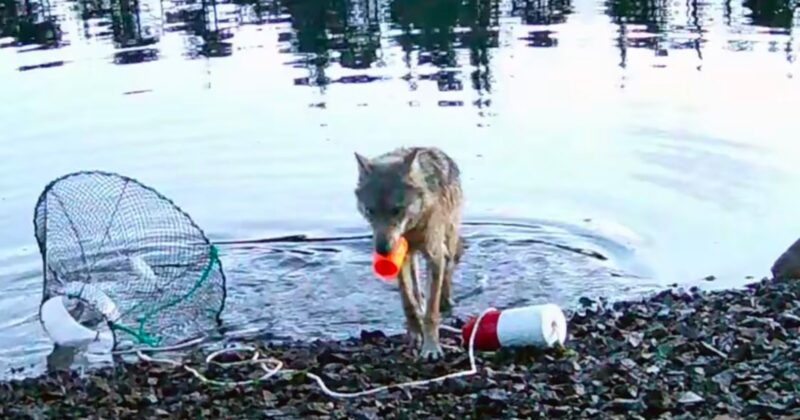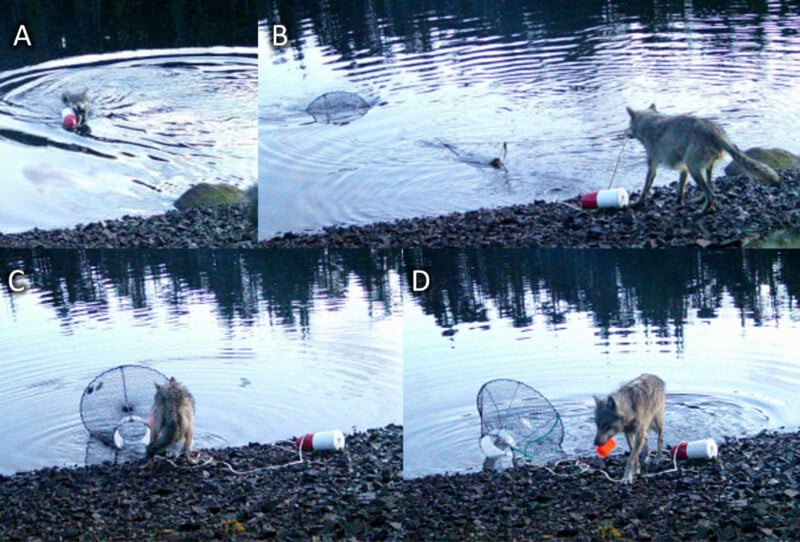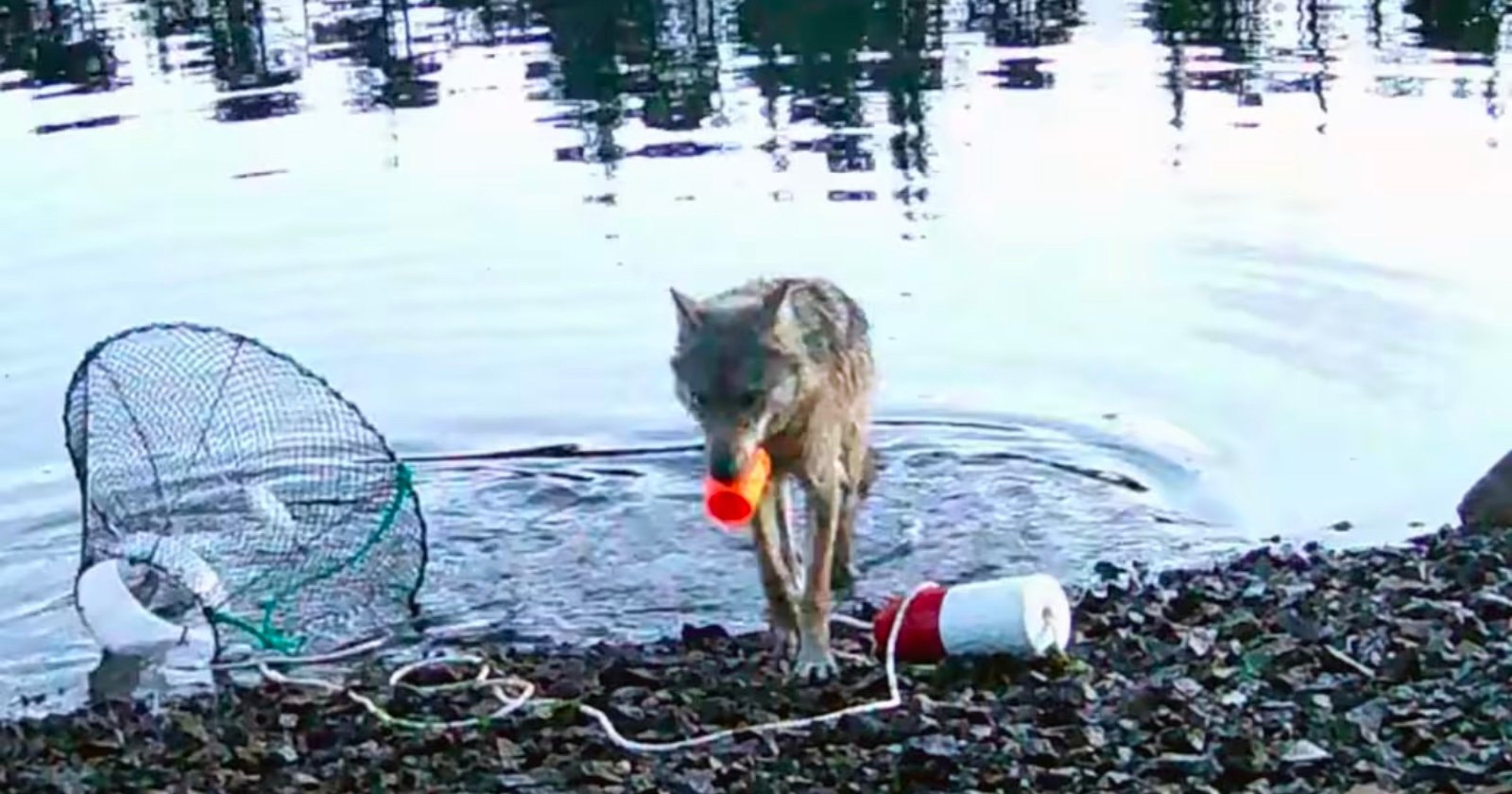 Still from the remote camera trap footage. Researchers say this video is the first known example of tool use by wild canids, which include wolves, coyotes, jackals, and foxes. Images by K.A. Partelle and P.C. Paquet, Ecology and Evolution, 2025
Still from the remote camera trap footage. Researchers say this video is the first known example of tool use by wild canids, which include wolves, coyotes, jackals, and foxes. Images by K.A. Partelle and P.C. Paquet, Ecology and Evolution, 2025
Remote cameras have captured footage of wild wolves pulling crab traps out of the sea by their lines to eat the bait inside — in the first evidence of possible tool use by the canines.
Members of the Heiltsuk First Nation, an Indigenous government in British Columbia, have been setting crab traps near Bella Bella on Canada’s west coast to curb populations of the invasive European green crab. The species has been damaging clam, herring, and salmon stocks that the Heiltsuk rely on for food.
However, many of the traps were repeatedly found ashore, torn apart, with the mesh ripped and the bait removed, suggesting that the contents were being taken before researchers could collect the traps. At first, the Heiltsuk Nation suspected that seals or other marine mammals might be responsible for the damage.
In a study published Monday in the journal Ecology and Evolution, a research team led by Kyle Artelle, a professor at the SUNY College of Environmental Science and Forestry, and Paul Paquet, an adjunct professor at the University of Victoria, revealed how they set out to determine who was targeting the traps. They positioned motion-activated cameras on the shoreline, pointed toward the area where the camera traps were anchored.
 Stills from the remote camera video show a wolf pulling an initially submerged green crab trap to shore to access the baited cup within.
Stills from the remote camera video show a wolf pulling an initially submerged green crab trap to shore to access the baited cup within.
Less than a day after the cameras were installed in May last year, the researchers recorded footage of a coastal wolf emerging from the water with a buoy in its mouth. The video shows the wolf dropping the buoy, seizing the exposed rope, and pulling continuously until the submerged trap appears. The animal then dragged the trap into shallower water and ate the bait. Canadian news outlet CBC reports that footage from this year captured a second wolf similarly removing a trap, indicating that the behaviour may be shared among wolves in the local pack.
This remote camera footage is believed to be the first evidence of potential tool use by wild canids, which include wolves, coyotes, jackals, and foxes. However, the researchers note that what qualifies as “tool use” is debated. According to a report by The New York Times, the standard definition of tool use involves intentionally using an external object to accomplish a task. Because humans placed the rope, some experts argue the wolves’ behaviour may instead reflect advanced problem-solving.
Lead researcher Artelle says the behaviour is remarkable regardless of the label. The wolf completed the sequence in under three minutes, which he said shows that “this wasn’t just random tinkering.” He described the wolf’s actions as “unwaveringly purposeful,” adopting terminology used in studies of chimpanzee tool use.
“Even if we don’t want to call it tool use, the fact that the trap was completely underwater and out of sight makes it hard to argue that she didn’t understand the connection between all these steps,” Artelle tells The New York Times.
The remote camera footage comes months after researchers have captured drone videos of killer whales using kelp to groom one another — an extraordinary first in marine tool use.
Image credits: All photos by K.A. Partelle and P.C. Paquet, Ecology and Evolution, 2025.

